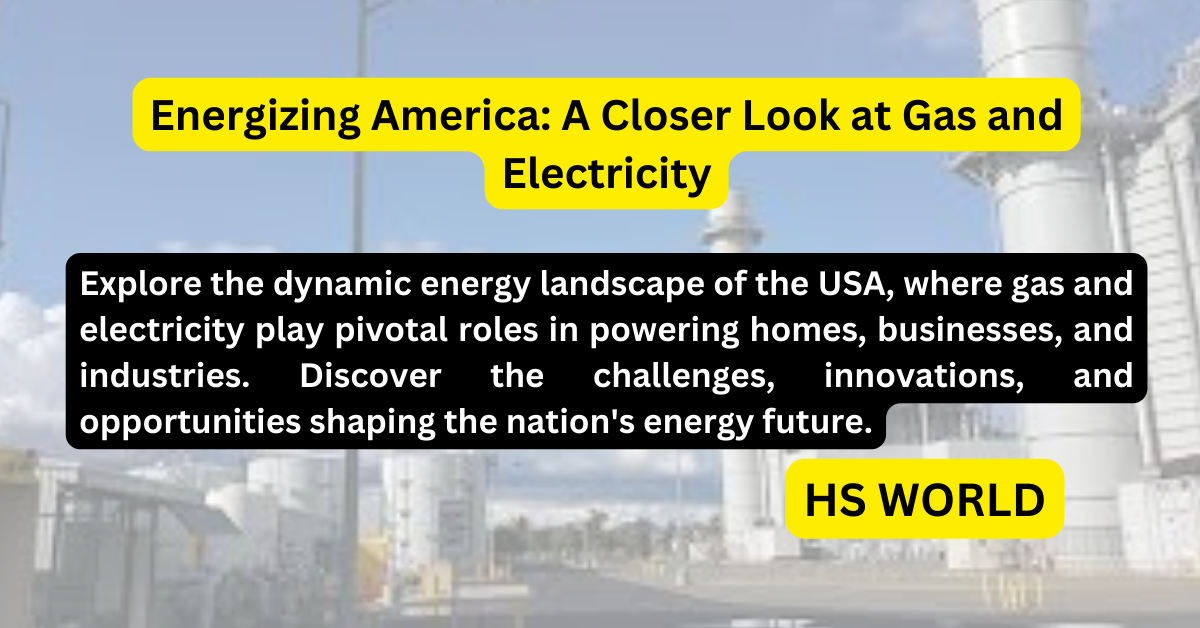The Gas Revolution
The United States is undergoing a transformative period in its energy production, with natural gas playing a pivotal role. Advances in drilling technologies, particularly hydraulic fracturing and horizontal drilling, have unlocked vast reserves of natural gas trapped in shale formations. This has propelled the USA to the forefront of global natural gas production, reshaping the domestic and international energy markets.
Natural gas is celebrated for its versatility and relatively lower environmental impact compared to other fossil fuels. It serves multiple purposes, including electricity generation, heating, transportation, and as a raw material in various industrial processes. The electricity sector, in particular, has seen a significant shift towards natural gas. The closure of numerous coal-fired power plants and the construction of new gas-fired plants have led to a notable reduction in greenhouse gas emissions and air pollutants. Natural gas emits approximately half the carbon dioxide of coal when burned, making it a more environmentally friendly option for power generation.
However, the extraction and production of natural gas are not without challenges. Hydraulic fracturing, or fracking, involves injecting a high-pressure mixture of water, sand, and chemicals into shale rock to release gas. This process has raised environmental concerns, including the potential for groundwater contamination, induced seismic activity, and significant methane emissions—a potent greenhouse gas. Methane leaks can occur at various stages of natural gas production, from extraction to transportation and storage.
Addressing these environmental concerns requires stringent regulations and the adoption of best practices. Innovations in leak detection and repair, improved well construction techniques, and the use of less harmful chemicals in fracking fluids are some of the measures being implemented to mitigate the environmental impact. Additionally, the industry is increasingly focusing on reducing methane emissions through initiatives such as the Environmental Protection Agency’s (EPA) Natural Gas STAR Program, which encourages voluntary measures to reduce methane leaks.
The future of natural gas in the USA will likely involve balancing its role as a cleaner-burning fossil fuel with the need to transition towards more sustainable energy sources. As renewable energy technologies continue to advance and become more economically viable, the role of natural gas as a “bridge fuel” will be crucial in ensuring a smooth transition to a low-carbon energy future. Policymakers, industry stakeholders, and environmental advocates must work together to ensure that natural gas production is conducted responsibly, minimizing its environmental footprint while maximizing its benefits.
Powering the Nation
Electricity is the lifeblood of modern society, underpinning nearly every aspect of daily life and economic activity. In the United States, the electricity sector is in the midst of a significant transformation, driven by technological advancements, policy shifts, and changing consumer preferences. The nation’s electricity generation mix is becoming increasingly diverse, with a growing emphasis on renewable energy sources alongside traditional fossil fuels and nuclear power.
Historically, coal was the dominant source of electricity generation in the USA. However, its share has been declining due to environmental regulations, the aging of coal-fired power plants, and competition from cheaper natural gas and renewable energy sources. The rise of natural gas as a leading source of electricity generation has been a key factor in this shift. Natural gas-fired power plants are not only more flexible and efficient but also produce fewer emissions compared to coal plants.
Renewable energy sources, particularly wind and solar, have experienced rapid growth over the past decade. Technological advancements and economies of scale have significantly reduced the costs of renewable energy, making it more competitive with traditional energy sources. In 2020, renewables surpassed coal for the first time in the US energy mix, highlighting the accelerating shift towards cleaner energy. States like California and Texas have become leaders in renewable energy adoption, with substantial investments in wind and solar infrastructure.
However, integrating renewable energy into the grid presents several challenges. Wind and solar power are intermittent, dependent on weather conditions and time of day, which can lead to fluctuations in power supply. Ensuring grid reliability and stability requires advanced energy management solutions, including energy storage systems, grid modernization, and demand response programs. Energy storage technologies, such as lithium-ion batteries and pumped hydro storage, play a crucial role in balancing supply and demand, storing excess energy generated during peak production times for use during periods of low production.
Grid modernization efforts are essential to support the integration of renewable energy. This involves upgrading aging infrastructure, deploying smart grid technologies, and enhancing grid resilience against natural disasters and cyber threats. Smart grids use digital technology to monitor and manage electricity flows in real-time, improving efficiency and reliability. Demand response programs incentivize consumers to reduce or shift their electricity usage during peak periods, helping to balance the grid and reduce the need for additional power plants.
The transition to a cleaner, more sustainable energy future is also driven by policy initiatives at both federal and state levels. Incentives such as tax credits, grants, and renewable portfolio standards (RPS) encourage the development and adoption of renewable energy. The Biden administration’s emphasis on addressing climate change and promoting clean energy further underscores the nation’s commitment to transitioning to a low-carbon economy.
In conclusion, the USA’s electricity sector is evolving rapidly, driven by a combination of market forces, technological advancements, and policy support. The increasing adoption of natural gas and renewable energy sources is reshaping the nation’s energy landscape, offering opportunities for reducing emissions, enhancing grid reliability, and promoting economic growth. As the nation continues to navigate this energy transition, balancing the needs of energy security, environmental sustainability, and economic viability will be crucial to ensuring a resilient and sustainable energy future.
